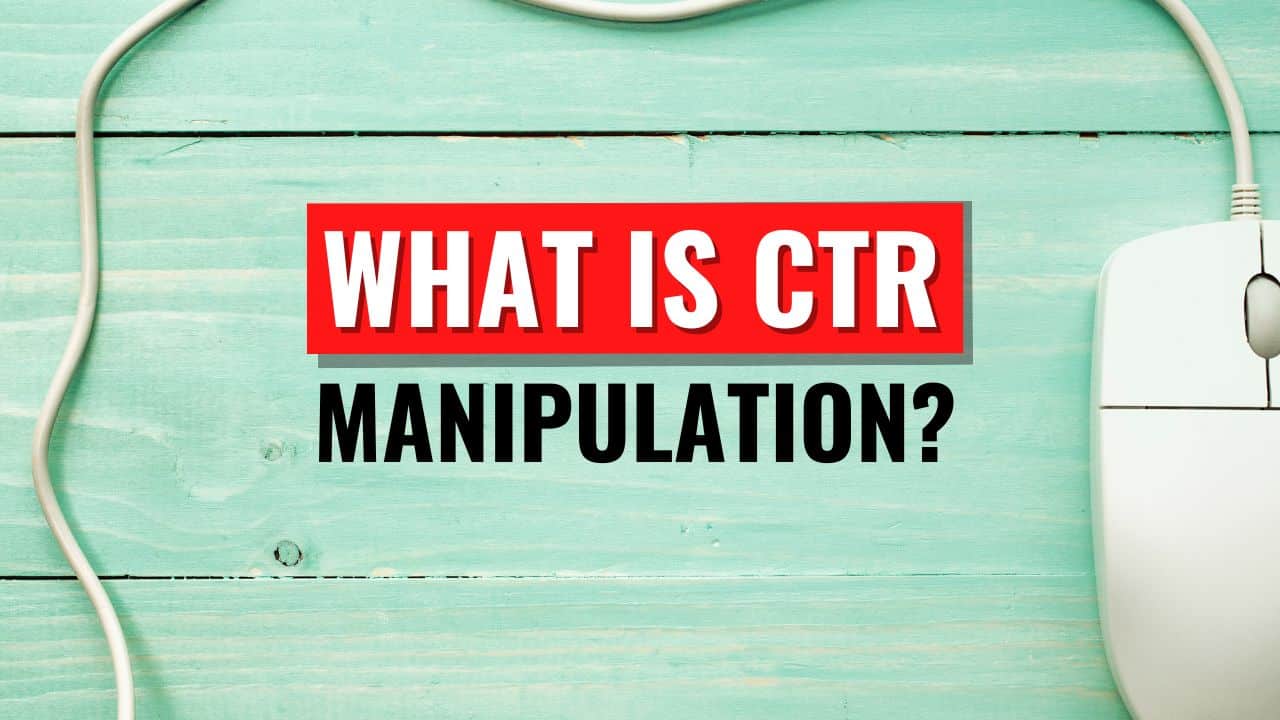Achieve Greater Advertisement Success With Strategic CTR Adjustment
In the realm of digital advertising, achieving greater success pivots significantly on the strategic manipulation of click-through rates (CTR) By fine-tuning various project components-- varying from advertisement duplicate to visual appeal-- marketing professionals can boost involvement and drive conversions. Nonetheless, this quest of raised CTR have to be balanced with moral factors to consider and sector policies to foster trust fund and ensure lasting success. As we explore the subtleties of CTR optimization, it comes to be obvious that the path to reliable ad projects is a lot more complex than it shows up, exposing vital insights that might transform your strategy.
Recognizing Click-Through Rate
Click-through rate (CTR) is a crucial efficiency metric that quantifies the efficiency of electronic advertising projects by measuring the ratio of customers who click on a certain link to the number of complete users who view the connected material. This statistics serves as a sign of just how well a campaign resonates with its target audience, mirroring the charm of the material and its call-to-action.
CTR is generally revealed as a percent, calculated by dividing the variety of clicks by the number of impacts and multiplying by 100. A higher CTR shows that users discover the content engaging and pertinent, while a lower CTR may recommend a demand for enhancement in material top quality, targeting, or discussion.
Moreover, CTR can vary substantially throughout various systems and formats, such as email advertising and marketing, social networks, and show ads. Recognizing these variants is crucial for marketing professionals to customize their approaches effectively. Examining CTR along with various other metrics, such as conversion price and engagement degree, gives much deeper understandings right into individual habits and overall campaign efficiency. By realizing the subtleties of CTR, marketing experts can make enlightened choices to improve their electronic advertising efforts - CTR Manipulation Press Release.
Significance of CTR in Advertising

Furthermore, CTR plays an important duty in maximizing advertising and marketing expenditures. Advertising platforms, such as Google Ads and Facebook Advertisements, make use of CTR as a crucial factor in identifying ad positioning and cost-per-click (CPC) A greater CTR can lead to reduced CPCs, optimizing spending plan efficiency and enhancing additional reading return on investment (ROI)

Strategies for CTR Optimization
Maximizing Click-Through Rate (CTR) is vital for advertisers seeking to improve the efficiency of their projects. Executing targeted techniques can significantly boost CTR, eventually causing better ad performance.
To start with, refining ad copy is essential. Crafting engaging headlines and clear phone call to action (CTAs) can attract individuals' interest and encourage clicks. Making use of action-oriented language and emphasizing worth proposals can effectively reverberate with the target audience.
Secondly, using A/B testing is vital. By try out different aspects such as visuals, duplicate, and placement, advertisers can determine which mixes generate the highest possible CTR. This data-driven method allows continuous optimization of advertisement web content.
Finally, maximizing targeting parameters is essential. By narrowing the target market based upon demographics, passions, and behaviors, advertisers can ensure their ads reach those probably to involve, consequently increasing the possibility of clicks.
Lastly, leveraging aesthetic elements can enhance interaction. Captivating pictures or video clips that match the ad message can draw interest and enhance CTR.
Evaluating CTR Efficiency Metrics
Recognizing the subtleties of CTR efficiency metrics is necessary for marketers intending to assess the efficiency of their campaigns. Click-through rate (CTR) acts as an essential indicator of audience involvement, mirroring the percentage Learn More Here of individuals that connect with an advertisement about just how lots of times it was shown. A high CTR normally suggests that the ad resonates well with its target market, while a reduced CTR may indicate a demand for calculated modifications.
To analyze CTR performance properly, marketers ought to consider numerous elements, including the positioning of the advertisement, the significance of the content, and the target group. Segmenting data by device kind or geographic area can use deeper insights right into customer habits and preferences. Contrasting CTR throughout different projects and platforms can aid identify best-performing approaches and areas for renovation.
On a regular basis keeping track of and analyzing these metrics allows marketers to make data-driven choices, optimizing their advocate enhanced performance. By recognizing the context behind CTR figures, marketers can refine their messaging and imaginative approaches, eventually driving far better results and attaining greater advertisement success.
Ethical Considerations in CTR Adjustment

Furthermore, marketers should take into consideration the ramifications of targeting vulnerable populaces - CTR Manipulation Press Release. Manipulative strategies that exploit psychological triggers or create false seriousness can result in consumer backlash and moral examination. Instead, advertisers should concentrate on supplying authentic value via pertinent material that resonates with their audience
Engaging in deceptive methods not only takes the chance of legal effects but likewise undermines the stability of the advertising ecological community. By fostering an atmosphere of sincerity and accountability, marketers can boost More hints their CTR while maintaining moral standards.
Conclusion
In verdict, strategic control of click-through prices (CTR) is essential for enhancing ad efficiency and driving conversions. By using techniques such as refined advertisement duplicate, engaging visuals, and targeted A/B testing, marketing professionals can efficiently engage audiences. Nevertheless, it is crucial to maintain moral standards, guaranteeing that advertisements precisely represent products and preserve transparency. Following these concepts not just fosters customer trust but also contributes to lasting development within the advertising and marketing landscape.